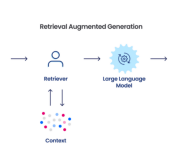The Transformative Role of 3D Animation in Advertising and Product Visualization
Introduction
The advertising industry is constantly looking for creative and innovative methods to seize the viewer’s interest. One such game-changing tool is an excellent visual story. The seamless amalgamation of technology with advertising has created compelling commercials, resulting in enhanced product value, customer appeal, and brand recognition. Let us discuss in detail the profound implications and benefits of 3D animation in the world of advertising.
Defining 3D Animation
Before we delve deep into the topic, it’s essential to understand what 3D Animation entails.
Animation is the rapid display of images or models in a sequence to create the illusion of motion. 3D animation creates moving objects that appear in a three-dimensional digital environment.
It involves using a three-dimensional representation of geometric data stored in the computer to perform calculations and render 2D images. This process makes the animated object appear moving and alive. Thanks to the geometric representation- also known as a wireframe model- the animator can manipulate the object by bending, twisting, or stretching it, for instance.
Application in the Advertising Industry
In the advertising industry, 3D animation has played a transformative role. Advertisers often employ animation techniques to create engaging videos. These videos leverage the compelling visuals and the dynamic nature of 3D animation to captivate the audience and boost the product or service’s appeal.
3D animation enables brands to demonstrate their products’ functionalities, features, and benefits in an interactive and visually engaging way. This approach can lead to increased understanding, appreciation, and, ultimately, purchase of the product being advertised. These animations can turn an otherwise flat and static marketing message into a dynamic visual story that enriches the customer’s experience.
The versatility and dynamism offered by 3D animation have resulted in more brands embracing it every day.
Benefits of 3D Animation in Advertising
Enhanced Aesthetics and Visualization
Everyone appreciates a good visual story. The utilization of 3D animation in advertising videos can elevate their aesthetics to higher levels. It provides a dynamic and immersive means to showcase a product or service. Viewers can view an item from multiple angles, see how it’s used, and even peer inside, if necessary, a capability that conventional two-dimensional images can’t afford.
High-quality 3D animations captivate viewers while at the same time enhancing their comprehension of the advertised product. So, it stands as an effective tool to illustrate complex concepts and present abstract ideas in an easy-to-understand visual format.
Versatility and Scalability
One standout benefit of 3D animation in advertising is its versatility. Advertisers can use this technique to create a variety of visuals, from explainer videos and product demonstrations to virtual tours and simulations.
From a scalability standpoint, once a 3D model or environment is created, its adaptability makes it quite cost-effective. The same model can be manipulated and reused for various advertising campaigns, thereby saving time and money for businesses. Plus, changes can be made relatively easily, providing flexibility as market needs or product features evolve.
Increased Engagement Rates
Advertising is all about building connections with consumers, and 3D animations have a unique way of achieving this. By creating well-crafted and engaging storytelling visually, 3D animation captures attention and holds it, leading to increased viewer engagement rates. This results in longer dwell times, improved recall rates, and greater conversion potential.
3D animation can stir emotions, convey personality, and make advertisements more memorable. This emotional connection tends to lead to higher engagement rates, and ultimately, more effective advertisements.
Role of 3D Animation in Product Visualization
The capacity of this advanced technology to create hyper-realistic and dynamic visuals has resulted in a more effective and immersive user experience. Key areas where 3D animation shows its strength in product visualization include
Making Abstract Concepts Concrete
One of 3D animation’s remarkable benefits is its ability to turn abstract concepts into concrete visualizations. This can be useful when promoting innovative products or services whose key features may be challenging to communicate using traditional advertising techniques.
The animation showcases the functionality of products. While traditional photographs might give potential customers a general idea of the product’s look, they cannot often effectively portray how it operates or is used.
3D animation, on the other hand, allows for creating detailed and fully interactive presentations that accurately demonstrate a product’s function in a way that’s easy to grasp. This not only amplifies consumer understanding but can also increase the perceived value of the product.
Creating a Realistic Product Experience
3D animation enables businesses to take their customers on a fully interactive, virtual tour of their products. This high level of interactivity simulates the in-store experience, allowing customers to closely examine product features from different angles and in various lighting conditions. Such an immersive experience increases customer confidence in the product.
Conclusion
3D animation serves a transformative role in advertising and product visualization. This cutting-edge technology has indeed opened up a new vista for creative exploration, innovative product presentation, and hyper-realistic videos for advertisement.
Overall, it is clear that 3D animation isn’t just the future – it’s the present. Brands today that capitalize on this advanced technology set themselves up for success and pave the way for a new era of advertising and product visualization. To stay relevant and innovative in today’s fast-paced digital world, it is no longer a question of whether 3D animation should be incorporated into a brand’s advertising strategy, but rather, how and when.





























